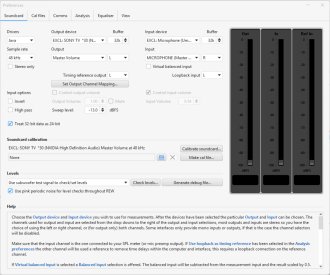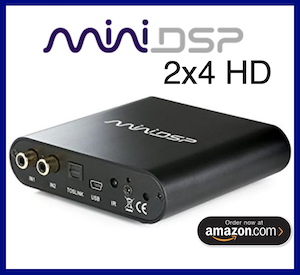2Sunny
Registered
Thread Starter
- Joined
- Apr 4, 2025
- Posts
- 11
More
- Preamp, Processor or Receiver
- Sony STR AZ5000ES
- Main Amp
- OutLaw 2220 x 3
- Universal / Blu-ray / CD Player
- Sony UBP-X700
- Streaming Equipment
- AppleTV (3rd gen)
- Streaming Subscriptions
- Netflix, Prime Video, Disney+, Max, Hulu, Tidal, Spotify
- Front Speakers
- Revel Performa F226Be
- Center Channel Speaker
- Ascend Acoustic Duo V2 LCR
- Surround Speakers
- Revel M16
- Front Height Speakers
- SVS Prime Elevation
- Rear Height Speakers
- Klipsch RP-500SA II
- Subwoofers
- SVS SB-1000 (2)
- Video Display Device
- Sony A95L 65" TV
- Cables
- Zeskit Lite
- Other Equipment
- Verizon FIOS Media Server
First a hearty thanks to any that reply as I'm fully aware that any input is meant with the best intentions and comes from average Joe's like myself who are just out to have fun or so I hope 
Anyways, I started searching for the word "good" in titles to try and figure out what good really means, and all the results offer links to gobs of reading. I get it; most folks here would prefer users not try taking shortcuts, but rather take the time to learn how to do it right what ever "right" means to them.
But . . . and please forgive me here if you disagree . . . but
This is a fun endeavor for me. I'm retired and recovering from cancer and am somewhat house-bound at the moment so looking for fun projects to occupy my time. I have a great home theater set up and recently invested a lot of money in upgrading the speakers and receiver and added 3 monoblock amps, but now I'm curious to try and use my newly purchased UMIK-1 and REW to see if there aren't changes I can make to improve the sound in my room based on objective measurements. It's critical to note that I am extremely happy with what I have; I'm merely curious and interested in playing around with REW FOR FUN. BUT . . . I don't want to spend hours more reading various online links that may or may not have small nuggets of useful information, but mostly are filled with information that is simply not necessary. As an example there is this link frequently touted here. It's more than a decade old and recommends using a soundcard like the M-Audio, which I'm pretty sure most folks here do NOT use. (Correct me if I'm wrong on that)
So, with that as a background what I think I'm interested in doing is 2 fold. First, set a goal of trying to get as close as possible to reproducing the below graph in my own room, and second, make sure that the measurements I'm taking are meaningful.
Here then are my first questions:
1) Is that a reasonable goal?
2) Are the measurements I took meaningful if not how do I make them meaningful?
3) Is there someway to get REW to let me add LFE to L+R for a combined reading or is averaging readings the only method for combining channels?
EDIT: The graphs from my room are 1/12 smoothing.




Anyways, I started searching for the word "good" in titles to try and figure out what good really means, and all the results offer links to gobs of reading. I get it; most folks here would prefer users not try taking shortcuts, but rather take the time to learn how to do it right what ever "right" means to them.
But . . . and please forgive me here if you disagree . . . but
This is a fun endeavor for me. I'm retired and recovering from cancer and am somewhat house-bound at the moment so looking for fun projects to occupy my time. I have a great home theater set up and recently invested a lot of money in upgrading the speakers and receiver and added 3 monoblock amps, but now I'm curious to try and use my newly purchased UMIK-1 and REW to see if there aren't changes I can make to improve the sound in my room based on objective measurements. It's critical to note that I am extremely happy with what I have; I'm merely curious and interested in playing around with REW FOR FUN. BUT . . . I don't want to spend hours more reading various online links that may or may not have small nuggets of useful information, but mostly are filled with information that is simply not necessary. As an example there is this link frequently touted here. It's more than a decade old and recommends using a soundcard like the M-Audio, which I'm pretty sure most folks here do NOT use. (Correct me if I'm wrong on that)
MiniDSP UMIK-1 setup article
MiniDSP loudspeaker measurement article using REW and UMIK-1
REW, UMIK-1 and HDMI on Windows
AustinJerry's guide to setting up REW with USB microphones and HDMI
How to set up your mac for REW
Automotive Sound with miniDSP Products and REW
Realtraps Room Measuring Series
GIK Acoustics articles
GIK Acoustics videos
HiFizine Bass integration guide
Quickstart guide to bass measurements
DanDan's measurement primer
How to make quasi-anechoic measurements and spinoramas with...
MiniDSP loudspeaker measurement article using REW and UMIK-1
REW, UMIK-1 and HDMI on Windows
AustinJerry's guide to setting up REW with USB microphones and HDMI
How to set up your mac for REW
Automotive Sound with miniDSP Products and REW
Realtraps Room Measuring Series
GIK Acoustics articles
GIK Acoustics videos
HiFizine Bass integration guide
Quickstart guide to bass measurements
DanDan's measurement primer
How to make quasi-anechoic measurements and spinoramas with...
- John Mulcahy
- Replies: 144
- Forum: Official REW (Room EQ Wizard) Support Forum
So, with that as a background what I think I'm interested in doing is 2 fold. First, set a goal of trying to get as close as possible to reproducing the below graph in my own room, and second, make sure that the measurements I'm taking are meaningful.
Here then are my first questions:
1) Is that a reasonable goal?
2) Are the measurements I took meaningful if not how do I make them meaningful?
3) Is there someway to get REW to let me add LFE to L+R for a combined reading or is averaging readings the only method for combining channels?
EDIT: The graphs from my room are 1/12 smoothing.
Attachments
Last edited:













